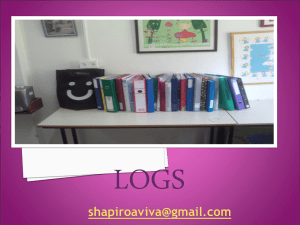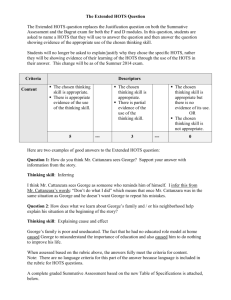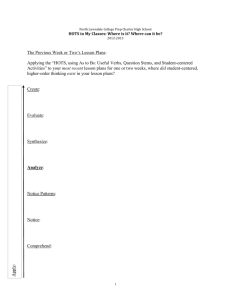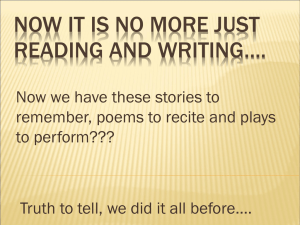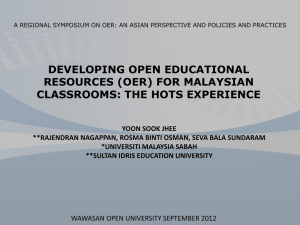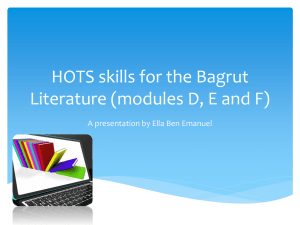File - Catherine Coleman
advertisement
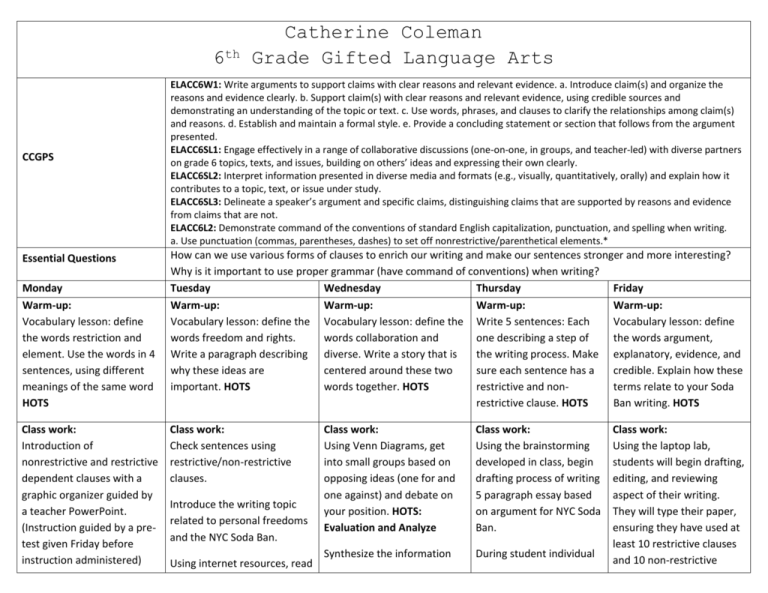
6th CCGPS Essential Questions Monday Warm-up: Vocabulary lesson: define the words restriction and element. Use the words in 4 sentences, using different meanings of the same word HOTS Class work: Introduction of nonrestrictive and restrictive dependent clauses with a graphic organizer guided by a teacher PowerPoint. (Instruction guided by a pretest given Friday before instruction administered) Catherine Coleman Grade Gifted Language Arts ELACC6W1: Write arguments to support claims with clear reasons and relevant evidence. a. Introduce claim(s) and organize the reasons and evidence clearly. b. Support claim(s) with clear reasons and relevant evidence, using credible sources and demonstrating an understanding of the topic or text. c. Use words, phrases, and clauses to clarify the relationships among claim(s) and reasons. d. Establish and maintain a formal style. e. Provide a concluding statement or section that follows from the argument presented. ELACC6SL1: Engage effectively in a range of collaborative discussions (one-on-one, in groups, and teacher-led) with diverse partners on grade 6 topics, texts, and issues, building on others’ ideas and expressing their own clearly. ELACC6SL2: Interpret information presented in diverse media and formats (e.g., visually, quantitatively, orally) and explain how it contributes to a topic, text, or issue under study. ELACC6SL3: Delineate a speaker’s argument and specific claims, distinguishing claims that are supported by reasons and evidence from claims that are not. ELACC6L2: Demonstrate command of the conventions of standard English capitalization, punctuation, and spelling when writing. a. Use punctuation (commas, parentheses, dashes) to set off nonrestrictive/parenthetical elements.* How can we use various forms of clauses to enrich our writing and make our sentences stronger and more interesting? Why is it important to use proper grammar (have command of conventions) when writing? Tuesday Wednesday Thursday Friday Warm-up: Warm-up: Warm-up: Warm-up: Vocabulary lesson: define the Vocabulary lesson: define the Write 5 sentences: Each Vocabulary lesson: define words freedom and rights. words collaboration and one describing a step of the words argument, Write a paragraph describing diverse. Write a story that is the writing process. Make explanatory, evidence, and why these ideas are centered around these two sure each sentence has a credible. Explain how these important. HOTS words together. HOTS restrictive and nonterms relate to your Soda restrictive clause. HOTS Ban writing. HOTS Class work: Check sentences using restrictive/non-restrictive clauses. Introduce the writing topic related to personal freedoms and the NYC Soda Ban. Using internet resources, read Class work: Using Venn Diagrams, get into small groups based on opposing ideas (one for and one against) and debate on your position. HOTS: Evaluation and Analyze Class work: Using the brainstorming developed in class, begin drafting process of writing 5 paragraph essay based on argument for NYC Soda Ban. Synthesize the information During student individual Class work: Using the laptop lab, students will begin drafting, editing, and reviewing aspect of their writing. They will type their paper, ensuring they have used at least 10 restrictive clauses and 10 non-restrictive Students will then complete advanced application exercises where they find restrictive clauses in teacherproduced sentences. Students will pair with partner based on interests (sports, art, music, etc) and will create their own sentences based on their interest that use restrictive clauses. HOTS Closer: What other meanings does the word restriction have? How does that relate to the idea of a restrictive clause? HOTS current event stories based on NYC soda ban and take notes using a Venn Diagram. presented by partner and interviews to create a counter argument. Closer: Quick, state a sentence with a restrictive and a nonrestrictive clause together. HOTS Begin brainstorming for writing on NYC Soda Ban. Homework: Complete Venn Diagram regarding NYC Soda Ban pros and cons. Interview 3 adults about their position on the NYC Soda Ban premise and personal freedoms and rights. writing, the teacher will conference with individual students to discuss writing. clauses. Peer editing and reviewing of papers digitally. Closer: Why is it helpful to Closer: Why is it important get someone else to review to go through every step Closer: How does the concept your writing? of the writing process? of a restriction (like a HOTS Homework: Vocabulary restrictive clause) apply to lesson based on standard the idea of the NYC Soda Homework: Finish rough words. Ban? HOTS draft (sloppy copy) of Soda Ban Persuasive Essay Homework: Finish brainstorming Homework: Write 10 sentences that use a restrictive and a non restrictive clause in the same sentence. Assessment: Students will be assessed by the graphic organizer completion. Teacher will also assess students on the completion of their analysis sentences. Assessment: Review of sentences and completion of Venn Diagram Assessment: Teacher will assess student understanding orally during debates and discussion. Assessment: Students will have individual conferences with the teacher to assess progress and weaknesses in writing Assessment: Students will self assess and will assess other student work during peer editing. Differentiation Instruction: Information will be presented in a graphic organizer, via PowerPoint, and orally. Differentiation Instruction: Information will be synthesized using a graphic organizer and internet resources. Product: Students will be producing sentences based on student interest. Technology BYOT: Students can use their own technological devices to help with the definition portion of the warm-up. PowerPoint: Teacher will present information via PowerPoint, but students will control the movement of the slides. Differentiation Instruction: Students will be partnered with other students holding opposing ideas to challenge them. Product: students will be writing a paper based on their views and their opinion. Technology BYOT: Students can use their own technological devices to look up definitions, as well as to research personal freedoms related to the NYC Soda Ban. Technology BYOT: Students can use their own technological devices to help with the definition portion of the warm-up. Differentiation Instruction: Student conferences to assess and re-teach information on an as needed basis Product: Student writing will be based on their own views and synthesis of information. Technology Teacher conference information will be placed on individual accounts on Edmodo for student review. Differentiation Instruction: Students will receive individualized assistance with their writing on an as needed basis. Technology Students will use word processers to type and formalize their papers. They will then use the comment function of Microsoft Word to comment on other student papers.
